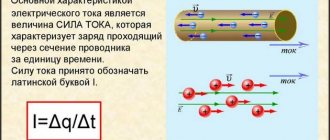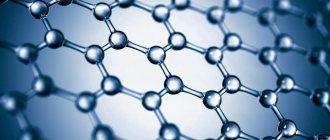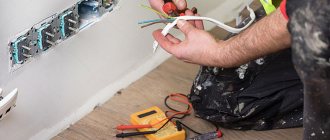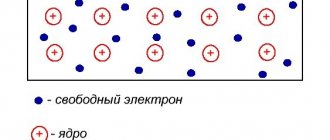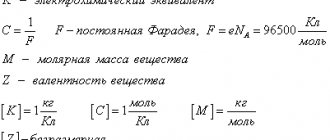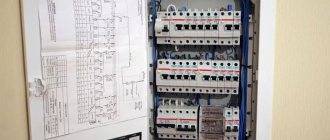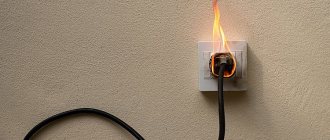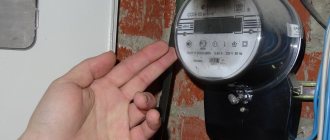Removing static electricity in production plays a very important role. The accumulation of charge leads to the sticking of materials, attracting dust, and as a result slows down production processes.
The formation of such a charge is characteristic only of dielectrics. Any plastic, including PVC, is a good dielectric, and therefore is susceptible to these processes. And it is important for managers to know how to remove static from plastic in production in order to ensure the safety of employees and establish a normal technological cycle.
Why does metal conduct current but wood does not?
The vast sea of electrons can carry charge. If you create a kind of “tilt”, that is, apply an electric field, then an electric current
— we are dealing with
metal
.
... Therefore, current
is not transmitted through such substances. These include plastics, wood, rubber, ceramics and many other substances.
Interesting materials:
How to view Tattelecom cameras? How to see the number of charge cycles for an iPad? How can I view purchased games on the PS Store? How to view the Erts receipt? How to view licenses on the Rosprirodnadzor website? How to see the maximum battery capacity on an iPhone? How to see the maximum battery capacity on an iPad? How to see the location of an iPhone? How can I find my Dell monitor model? How to see how many charge cycles there are on an iPhone?
New plastic can conduct electricity
The newly discovered method will make it possible to create a range of new types of plastics with metallic or even superconducting properties.
Plastic generally conducts electricity so poorly that it is typically used to insulate electrical cables. But by placing a thin layer of metal on a plastic sheet and mixing it into a polymer surface using an ion beam, Australian researchers have shown that the method can be used to produce plastic shells that are cheap, strong, flexible and conductive.
The study was published in the journal ChemPhysChem by a research team led by Professor Paul Meredith and Professor Ben Powell at the University of Queensland. Ion beam techniques are widely used in the microelectronics industry to tailor the electrical conductivity of semiconductors such as silicon, but attempts to apply this process to plastic shells have been made with limited success since the 1980s. But now everything is different.
“The research team was able to use an ion beam to tune the properties of the plastic shell so that it conducts electricity like the metals used in electrical wires and even acts like a superconductor and conducts electric current without resistance, provided it is cooled and the temperature drops sufficiently,” reported Professor Meredith.
To demonstrate the potential applications of this new material, a team of physicists produced electrical resistance thermometers that meet industry standards. Tested for comparison with a platinum standard resistance thermometer, the new thermometer gave equal or better results, showing superior accuracy.
“This material is so interesting because we can take all the desirable aspects of polymers—mechanical flexibility, operational reliability and low cost—and add to these all the good electrical conductivity that is not naturally associated with plastic. This opens up new routes to plastic electronics. "
Experts say the most exciting thing about this discovery is the fine-tuning of the shell's ability to conduct or resist the flow of electrical current. This opens up wide potential for useful applications.
“In fact, we can change the electrical resistivity by more than 10 orders of magnitude, which suggests we have ten billion dollars of choice in adjusting the composition during the production of the plastic shell. In theory, we could make plastics that don't conduct electricity at all or as well as metals,” said Dr. Stephenson.
These new materials can be easily produced by equipment commonly used in the microelectronics industry and are significantly more oxygen tolerant than standard semiconducting polymers.
Taken together, these advantages of ion beam-treated polymer shells could represent a bright future in the modern development of soft materials for use in plastic electronics - a fusion of technologies of the present and the future.
PMMA (acrylic) plastic for 3D printer
WHAT IS PMMA THREAD?
Have you ever heard of polymethyl methacrylate (PMMA)? Probably no. What about acrylic or plexiglass? That's right, we're talking about the same material that's most often used as a lightweight, shatter-resistant alternative to glass.
ADDITIONAL INFORMATION
3D printing with PMMA 3D printer filament can be a little trickier. To prevent warping and achieve maximum clarity, extrusion must be consistent, which requires high nozzle temperatures. It may also help to close the print chamber to better regulate cooling.
WHEN SHOULD I USE PMMA 3D PRINTER FILAMENT?
Tough, impact-resistant and clear, use this 3D printer filament for anything that needs to diffuse light, be it a replacement window glass or a colorful toy. Just don't use it to make anything that needs to bend, as PMMA is not very flexible.
Coefficient of linear (thermal) expansion - from 4 to 9*10-5 /°C
Causes of static electricity
Many have encountered problems with electrification at the household level. For example, if synthetic clothing seems to stick to the body or hair is attracted to the brush when combing, these are manifestations of electrification that every person encounters to one degree or another. In everyday life this is simply unpleasant, but in production it can be dangerous. Therefore, you need to know how to remove static electricity from plastic, which is the most common material today.
Problems with electrification are well known to anyone who uses paper, fabric and plastic in production processes. All this is typical for dielectrics. Normally, these materials contain equal amounts of positively and negatively charged particles. But under the influence of certain processes, for example, friction, the balance can be disrupted. This results in static voltage and charge buildup. In the future, this can lead to the problems listed above.
The reasons for the appearance of static electricity are as follows:
- contact of two different materials, at least one of which is a dielectric;
- rapid increase/decrease in temperature;
- sharp separation (removal) of two materials or bodies;
- ultraviolet radiation.
The likelihood that an object will become electrified increases significantly in rooms with dry or insufficiently humidified air.
PC / ABS plastic for 3D printers
WHAT IS PC/ABS FILAMENT?
Polycarbonate ABS (PC-ABS) is a durable thermoplastic that combines the strength and heat resistance of polycarbonate with the flexibility of ABS. Widely used in the automotive, electronics and telecommunications industries, it is one of the most widely used industrial thermoplastics in the world.
ADDITIONAL INFORMATION
When used as a 3D printer filament, the same benefits apply, but the trade-off is a slightly more complex printing process. First, since PC-ABS is hygroscopic, it is recommended to bake it before printing. Secondly, a high printing temperature is required (at least 260°C). Third, it tends to deform, so a high temperature of the printing layer is also necessary (at least 100°C, can reach 140°C).
WHEN SHOULD I USE 3D PRINTER OR PC FILAMENT?
Functional prototypes, tools, and low-volume parts that need to withstand minor impacts and shocks are well suited to PC/ABS.
Coefficient of linear (thermal) expansion - ABS/PC Blend 20% Glass Fiber 2*10-5 /°C, ABS/PC from 4 to 5*10-5 /°C
PVA plastic for 3D printers
WHAT IS PVA?
Polyvinyl alcohol (PVA) is water soluble, which is what commercial applications take advantage of. Popular uses include dishwasher detergent packaging or bags filled with fishing bait. (Throw the bag into the water and watch it dissolve, releasing the bait.)
ADDITIONAL INFORMATION
The same principle applies to 3D printing, making PVA an excellent support material when paired with other 3D printer filament in a dual extrusion 3D printer. The advantage of using PVA over HIPS is that it can be printed with more than just ABS.
The trade-off is the 3D printer filament is a little more difficult to handle. Care should also be taken during storage, as even moisture in the atmosphere can damage the filament before printing. Dry boxes and silica bags are essential if you plan to use PVA coil for long term use.
WHEN SHOULD I USE A PVA 3D PRINTER?
PVA filament is an excellent choice for support material for complex prints with raised edges.
FPE plastic for 3D printer
WHAT IS FPE FILAMENT?
Flexible polyester (FPE) is a versatile 3D printer filament label that combines hard and soft polymers. These filaments are comparable to PLA, but are softer and more flexible. The specific flexibility depends on the hard and soft polymers used, as well as the ratio between them.
ADDITIONAL INFORMATION
Two notable aspects of FPE include good adhesion between layers and moderately high resistance to heat and various chemical compounds. Given the wide range of FPE 3D printer filament available, perhaps the most useful way to differentiate between the wide range of FPEs available is the Shore value (e.g. 85A or 60D), with a higher number indicating less flexibility.
WHEN SHOULD I USE A FPE 3D PRINTER?
When printing flexibility is required, but ease of printing takes priority. Flexible filaments can be challenging to print, and FPE can offer an alternative that offers a little bit of everything. Easy to print like PLA but with more flexibility in the printing result.
HIPS plastic for 3D printers
WHAT IS HIPS THREAD?
In the commercial world, high impact polystyrene (HIPS)—a copolymer that combines the hardness of polystyrene and the elasticity of rubber—is commonly found in protective packaging and containers such as CD cases.
In the world of 3D printing, HIPS usually plays a different role. 3D printers cannot print in air. Sheds require some basic structure and this is where HIPS really shines. Combined with ABS in dual extrusion printer, HIPS is an excellent supporting material.
ADDITIONAL INFORMATION
To double extrusion print with HIPS, simply tighten the supports to the max and fill in any gaps in your design with the HIPS 3D printer filament. Dipping your finished print in limonene will push back the HIPS, leaving your final product behind.
Unfortunately, using HIPS as a support material limits you to printing the actual part in ABS. Other 3D printer filament materials will be damaged by limonene. In any case, HIPS and ABS print well together, have the same strength, stiffness, and require comparable printing temperatures.
In fact, despite the fact that HIPS was originally used as a support material, it is a decent filament for 3D printers. It is stronger than PLA and ABS, warps less than ABS, and is easy to glue, sand, and paint.
WHEN SHOULD I USE HIPS 3D PRINTER FILAMENT?
Sharing many of the same characteristics as ABS, HIPS 3D printing filament is great for parts that need to withstand wear and tear, as well as for projects that require finishing material to achieve the final look.
Coefficient of linear (thermal) expansion - from 5 to 20*10-5 /°C
Wax for printing on a 3D printer. 3D Wax. Casting wax
WHAT IS WAX THREAD?
Want to print something out of real brass, tin, or other metal? Well, you can! View...You will actually print the mold using wax filament with a 3D printer. But with a few extra steps, your design can really come to bright, metallic life.
ADDITIONAL INFORMATION
The process is called "lost wax" or "investment" casting, and it more or less works like this:
- Create a positive wax mold, that is, a wax copy of what you want the final metal product to look like
- Dip the mold into plaster and let it dry.
- Place the wax plaster item in the oven. At a high enough temperature, the wax will melt, leaving a negative space within the plaster into which the metal product can be cast.
Wax 3D printer filament makes the first step easy since you usually have to cut out the shape from pure wax.
The dominant wax arena for 3D printers is MOLDLAY from Kai Parthy CC Products. When using this or similar wax-like materials, keep in mind that they are much softer than most types of 3D printer filament. Other precautions may require modification of the extruder and application of a printable adhesive layer.
WHEN SHOULD I USE WAX (MOLDLAY) 3D PRINTER FILAMENT?
If you cast metal parts, wax filaments like MOLDLAY can give you greater flexibility, allowing you to directly print complex 3D designs that fit into your investment casting workflow.
Where to buy wax filament for 3D printing on a 3D printer
In Russia, the most famous manufacturer of wax-based threads is Filamentarno and Rec3D, abroad - Sunlu, Yasin.
How to remove static electricity from plastic
Whether polypropylene or PVC, the build-up of static charge on the surface of these materials can hinder the production process. There are different ways to remove static stress from plastic in an industrial environment. Conventional antistatic treatment will not help - this option is only suitable for home use with a small surface area. There are three suitable options:
- wipe the surface with isopropyl alcohol or a weak soap solution;
- achieve air ionization using various equipment - for example, an antistatic strip or an ionizer gun;
- apply special antistatic additives, including metal powder or carbon fiber.
There are also special antistatic agents designed for long-term action. Their properties are not affected by air humidity characteristic of the room in which the equipment will be located. But this method is more expensive, so special stress-relieving blocks are used to produce plastic sheets.
When thinking about how to remove static from plastic, you should consider complex solutions. This means that several devices are used at once that will fight static electricity. These can be not only antistatic strips, but also special brushes, ionizing knives, and discharging power supplies. They work to reduce the intensity of the charge and prevent its accumulation. This will help to avoid many troubles, including increased fire safety, since there will be no spark discharge.
In production, it is also important to ensure the safety of employees. The human body can become a conductor of current. In order for it to drain and go into the ground, you need shoes with conductive soles and special protective clothing. All employees must be provided with it.
PP plastic for 3D printer
WHAT IS PP?
Polypropylene (PP) is strong, flexible, lightweight, chemically resistant and food safe, which may explain its wide range of applications including engineering plastics, food packaging, textiles and banknotes.
ADDITIONAL INFORMATION
Unfortunately, 3D printer filament is used in printing materials due to severe deformation and poor adhesion. If not for these issues, PP would likely challenge PLA for the most popular 3D printer filament, given its strong mechanical and chemical properties.
Interestingly, since many household items are made from polypropylene, it is actually possible to recycle old waste and turn it into new 3D printer filament.
Coefficient of linear (thermal) expansion - from 7 to 17*10-5 /°C
WHEN SHOULD I USE PP 3D PRINTER FILAMENT?
If you can control the deformation of PP, then most prints that require a durable, lightweight material will be suitable for PP. However, it is important to note that while the material finds widespread use in consumable and drug packaging due to its food-safe properties, the FDM 3D printing process negates this with hundreds (if not thousands) of bacterial layer lines. which can be hung in - it’s better not to try.
